Dry curing is becoming a lost art in America, the true techniques of producing a country ham are about to be lost due to modern industry.
Country Ham is an uncooked ham, dry salt-cured with or without sugar and spices, after the initial cure, and optional cold smoking, it is hung for a long aging process. The aging process can last from four month’s to more than a year or two. To be considered a country ham it must have lost a minimum of 18% of its total weight, a loss of 30% is not uncommon. It is similar to the larger Spanish Serrano and the Italian Prosciutto hams so popular in Europe.
Curing hams was a necessity in the days before commercial refrigeration. My childhood memories of the neighborhood farms are the wood-fired scalding tanks, normally located near the windmill, milk cooling building and the smoke house. Hams and pork bellies, hanging in the smokehouse or in the backrooms and root cellars of the houses, some hanging in flour sacks. The aroma alone would make my mouth water.
The hams that are found in the groceries today are pumped full of water or brine and ready to be cooked with sugar syrup and pineapples. It’s a fast and inexpensive way to produce hams for today's consumer.
Many like me have purchased fresh hams, pumped them full of brine and smoked and cooked them with satisfactory results. Although good, they lack the depth of flavor of the country ham. A Country Ham is an entirely different, superior time consuming product produced by artisans for the last four centuries and may have the most complex flavor of any food in the spectrum of human nourishment.
Fact:
There are reasons you don’t find dry-cured American country ham at your grocery store deli.
Producers must invest four months to a year aging a country ham, taking up space and tying up capital. They don’t see a return on their investment until the ham is ready for retail.
After reviewing publications from Virginia, Kentucky, Missouri and others I have gleaned what will be used here. It is my desire in this thread to provide the basic steps to produce a true country ham detailing the steps and updating the thread with information and pictures as time passes. “Nothing ventured, nothing gained”. Success or failure, it will be witnessed here.
Some of my research material follows below.
http://pubs.ext.vt.edu/458/458-223/458-223.html
http://extension.missouri.edu/p/G2526
http://www.fsis.usda.gov/factsheets/ham/index.asp
http://www.fda.gov/Food/FoodSa...de2001/ucm092709.htm
Processes that will be covered include:
Criteria
Purchasing
Curing
Curing Salts
Soaking and Washing
Cure equalization
Smoking
Aging
Cooking
Recipe:
Morton’s Smoke Flavored Sugar Cure
Full cure = 2.5 Lbs. cure/ 100 Lbs. Ham, or .4 oz. per pound of ham.
21 lb. ham uses 8.4 oz. cure per application.
Make three applications at 7 day intervals.
Curing time: 7 days per inch of thickness. 8" thick, 8 x 7 = 56 days total curing time.
Equalization period: 20 days.
Aging period: Up to one year.
Note : Cure start 11/26/12 end 01/28/13
Equalization start 01/28/13 end 02/17/13
Smoked 128 hours using an AMNPS and Hickory pellets.
Producing a Country Ham
Criteria:
In order for a ham to be called a true country ham, four criteria must be met.
1st. It must be dry cured. Not injected with curing solutions nor placed in a curing solution.
2nd. The combined curing and equalization period must not be less than 45 days.
3rd. It must age a minimum of four months after curing.
4th. It must lose a minimum of 18% weight from fresh.
Purchasing:
Purchase a fresh skin-on ham with a long shank that is cut off at the sacral joint and weighing between 20 and 23 pounds. The longer shank makes curing easier although the shorter shank can be used. Only the hind legs of hogs can be called Country Hams.
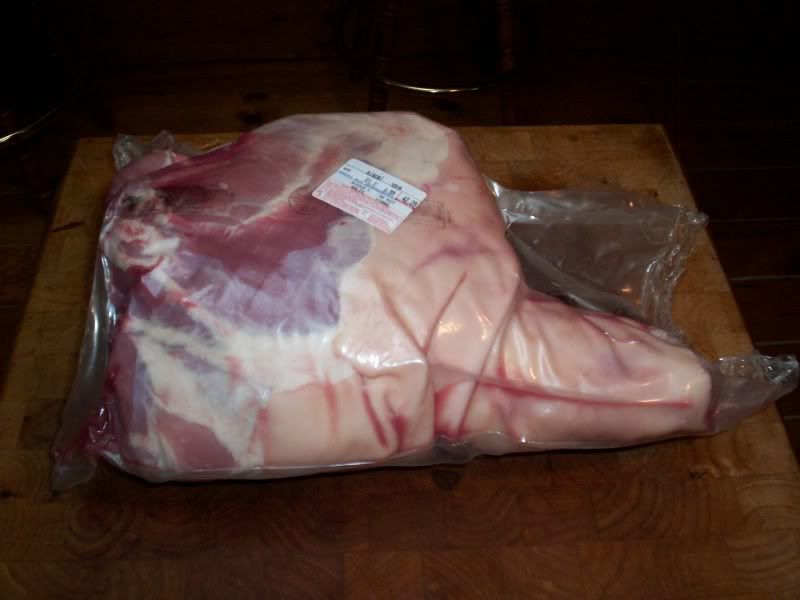
Fact:
Super-lean pork does not make a great ham. A dry-cured ham without fat feels rough in the mouth, is overly salty and doesn't have the characteristic texture of an old-fashioned country ham.
Fact:
Most American producers begin the curing process with hams that weigh in between 20 and 23 pounds. Smaller hams would dry out too quickly, and larger hams could spoil before the cure penetrates the meat. Some Spanish producers of larger Serrano style hams, however, lean toward gigantic hams, which, if cured correctly, have a few advantages: They come from larger, fatter pigs, which have more aging potential and more flavor. The fat ameliorates the saltiness and dryness of the meat, and the hams dry out less over the two-or- more-year aging process used in Spain. A two-year-old American ham tastes great but is drier and saltier tasting than a larger Spanish ham would be.
Curing:
It is strongly recommended that a commercial premixed cure be used.
The curing process begins by rubbing the fresh ham with salt and sometimes sugar, spices and nitrates.
Extreme caution must be exercised when using cures; never use more than called for in a recipe. In general, all cure mixes are designed to be used at the rate specified in the formulation or recipe.
It is important to remember that more is not better, it can be toxic. Using curing ingredients in higher levels will result in inconsistency, cured meats may be too salty and the finished product may be unsatisfactory.
Country Ham must cure for a minimum of 28 days. The combined curing and equalization period shall not be less than 45 days for hams and 25 days for pork shoulders. The total time for curing,equalization and drying shall not be less than 70 days for hams and 50 days for pork shoulders.
During the curing stage, always keep meat refrigerated (36° to 40°F). the closer to 40° the better; lower temperatures will slow the curing process, and temperatures below 28° will stop the curing.
There are many different cure recipes that can be used, with or without sugar and spices. Since I had enough * Morton’s Smoke Flavored Sugar Cure on hand to cure more than 20 hams, it is what I am using, although without using the spices.
Fact:
Italian prosciutto and Spanish Serrano hams are made with a pure salt cure and no added nitrates or nitrites. Some American hams are also nitrate free. When used, nitrates ensure a pink color and cured flavor in a short amount of time, and provide some anti-microbial benefits as well. Nitrates are not a modern addition to the curing process; they have been added to hams in the form of saltpeter for hundreds of years and in the form of impure salts for millennia. Meat naturally contains a small amount of nitrates, however, which allow it to take on a beautiful color on its own. The longer a ham is aged, the fewer added nitrates are necessary. Many American hams are cured with brown or white sugar in addition to salt. The sugar is not for sweetness, but rather serves to soften the harshness of the salt and the toughening effects of nitrates.
Fact:
City hams are pumped full of a brine mixture—usually water, salt, sugar, nitrates and other chemicals. The brine is often pumped directly into the pig’s femoral artery so that it circulates throughout the ham (industry lore is that an embalmer came up with this method). The process reduces the cure time to almost nothing, giving the meat a cured flavor and color in a fraction of the time of dry aging. The brine also makes the ham sweet, mild and semi-salty, so it can be carved into thick slabs and eaten with a fork and steak knife. And unlike a cured and aged ham, which loses weight over time, the brine-cured city ham often weighs more than it did before brining when it’s sold, adding up to higher profits for the producer. As Americans have adopted this as their de-facto ham, dry-curing has become a dying art.
* Morton Smoke Flavored Sugar Cure mix is formulated only for dry curing large cuts of meat like hams or bacon, unlike the Morton Tender Quick or the Morton Sugar Cure (Plain) mix or Cure #1.
Morton Tender Quick, Morton Sugar Cure (Plain) mix, these premix cures have been developed as a cure for meat, poultry, game, fish and sausage that require short curing times, and will be fully cooked. They are NOT interchangeable with cure #1; they measure differently.
Recommended cures for Country Ham's are Morton Smoke Flavor Sugar Cure or Cure #2 also marketed as
Prague powder #2; InstaCure #2; Modern cure #2; D.Q. powder #2
Morton Sugar Cure Smoke Flavored:
This cure premix is not recommended for sausage, but it is listed so that the user does not mistake or confuse this with Morton Sugar Cure (plain). This is a slow cure, and the cure reaction takes longer with Morton Smoke Flavored Sugar Cure than with cure #2 or Morton Sugar Cure (plain) or Morton Tender Quick. This premix is formulated especially for dry curing large cuts of meat like hams, or bacon, that need to be cured over a long period of time.
It contains salt, sugar, sodium nitrate (1%), propylene glycol, caramel color, natural hickory smoke flavor, a blend of natural spices and dextrose (corn sugar) - it does not contain sodium nitrite.
Cure #2:
This has the same curing and food preservative properties as sodium nitrite, and the extended curing time of sodium nitrate. It is specifically formulated to be used for making uncooked dry cured products that require several weeks to several months to cure. Dry curing meat or sausage properly cannot be done with Cure #1 which contains sodium nitrite only; it dissipates too quickly.
This cure is a blend of salt and sodium nitrite and sodium nitrate.
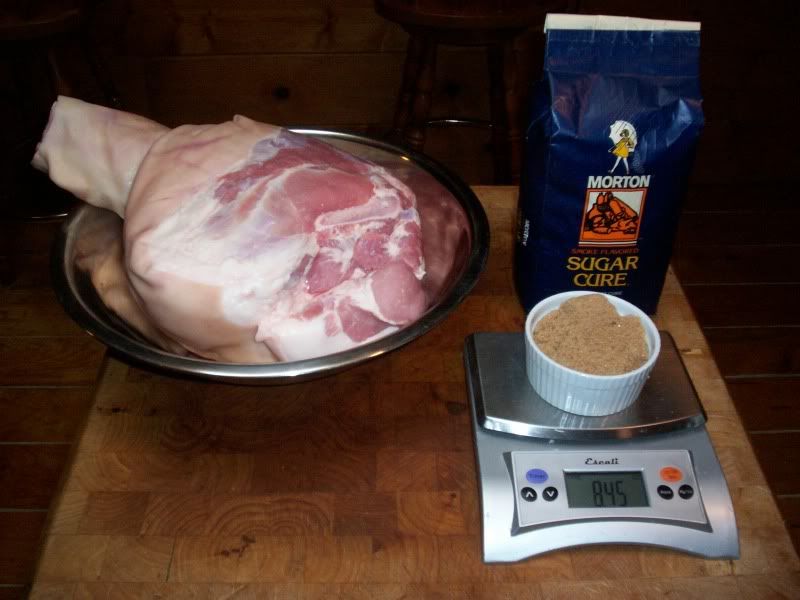
11/26/2012 First application
Trim any loose meat from exposed area. Rub cure well into the shank and exposed meat taking care to cover all areas including any cracks or crevasses.

Wrap with a layer of cheese cloth to help hold the cure in place.
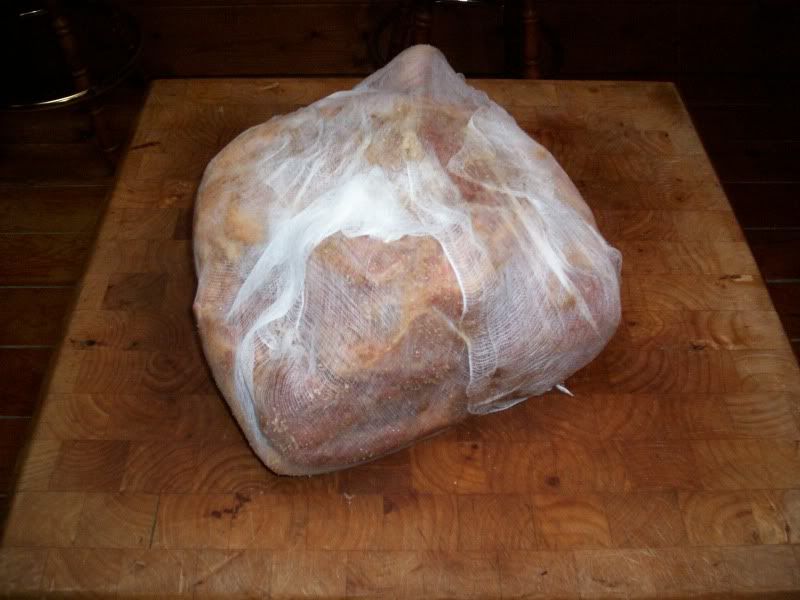
The ham was placed in netting and hung in a cooler at 36-40°, shank end down.
This position helps improve the shape and conformation and permits better moisture drainage.
Place a pan under the ham to collect moisture dripping from the ham.

Picture prior to third and final application of cure. Noticed outer meat beginning to firm and skin beginning to wrinkle slightly. Ham will now hang in cooler and continue curing for another 42 days afterwards the equalization period will begin.
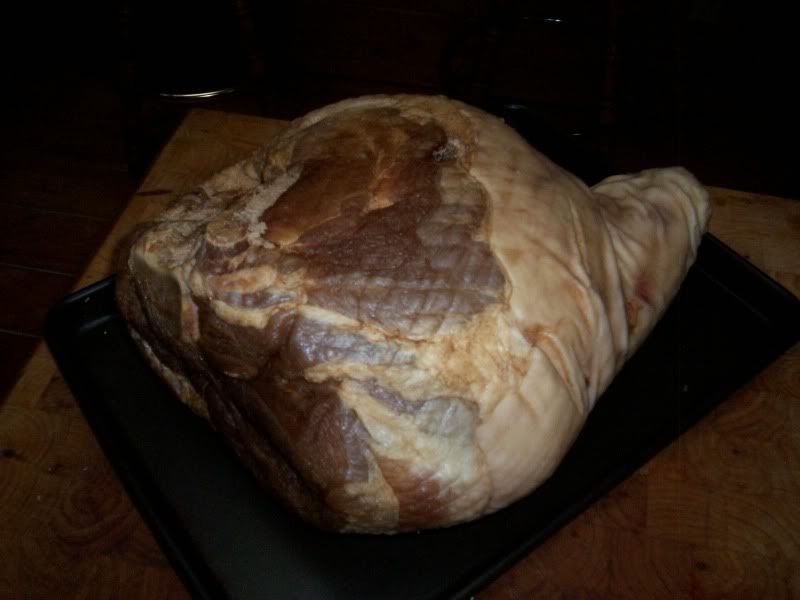
Equalization Period:
This permits the cure adjuncts to be distributed evenly throughout the ham.
At the end of the 56 day initial cure there was a 10.4 % weight loss, some salt crystal formation and some mold begging to form.
Mold beginning to form.
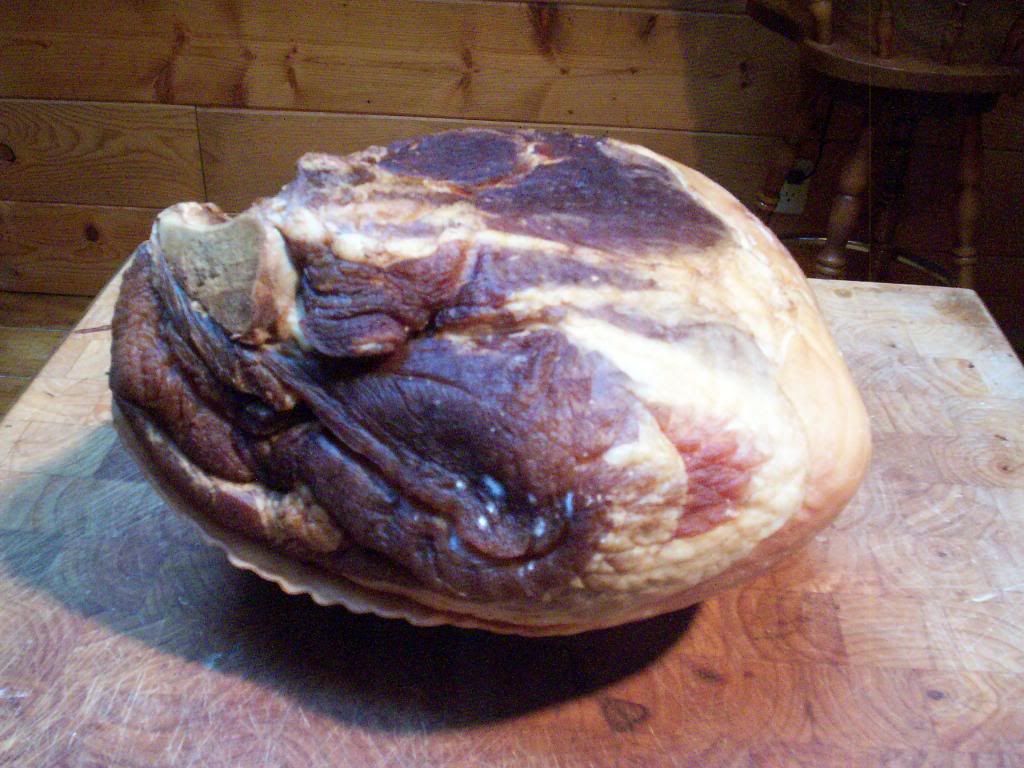
Salt Crystals forming on skin.
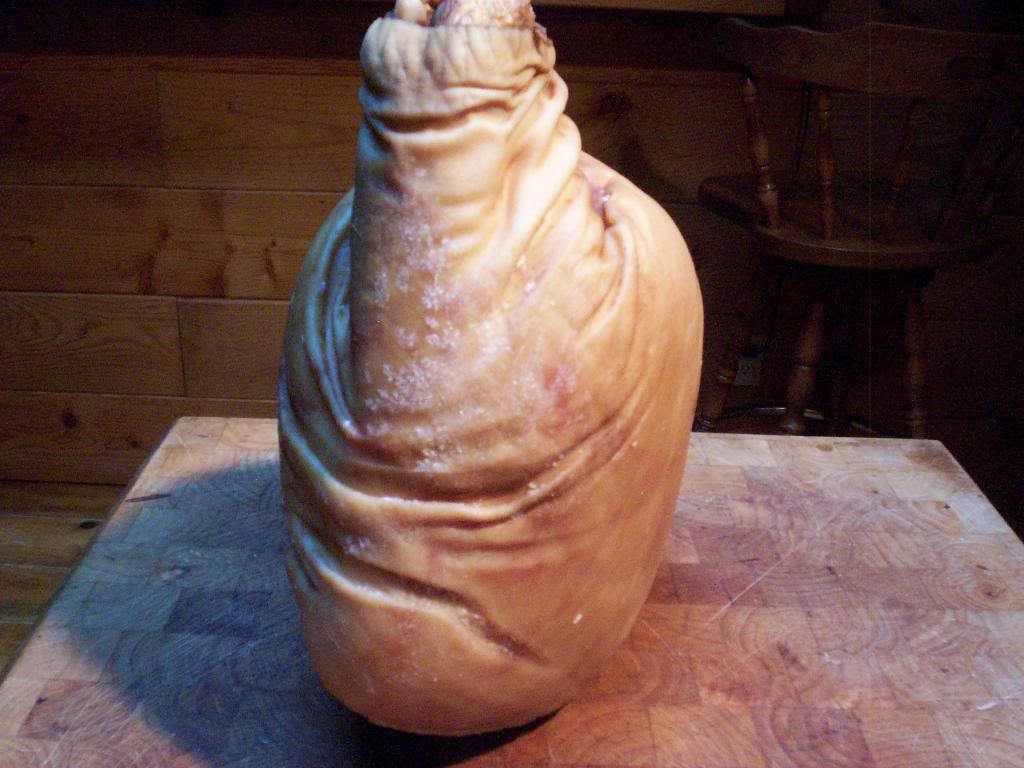
The beginning of the 20 day equalization period begins with a 1 hour soak in cold (41°) water and scrubbing with a stiff brush. This will dessolve most of the surface curing mix and make the meat more receptive to smoke. Noticed the meat took on very little if any water. It was dry shortly after patting with towel.
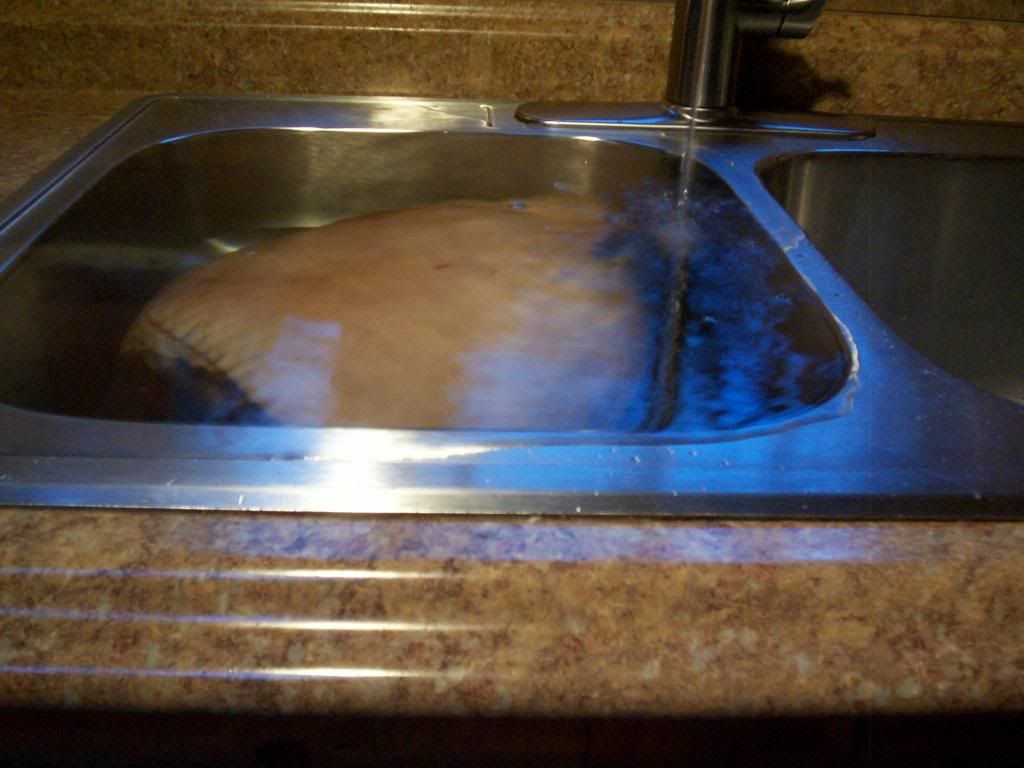
The ham was then placed in a cheese cloth bag and hung in a well vetilated 50° room for 20 days.
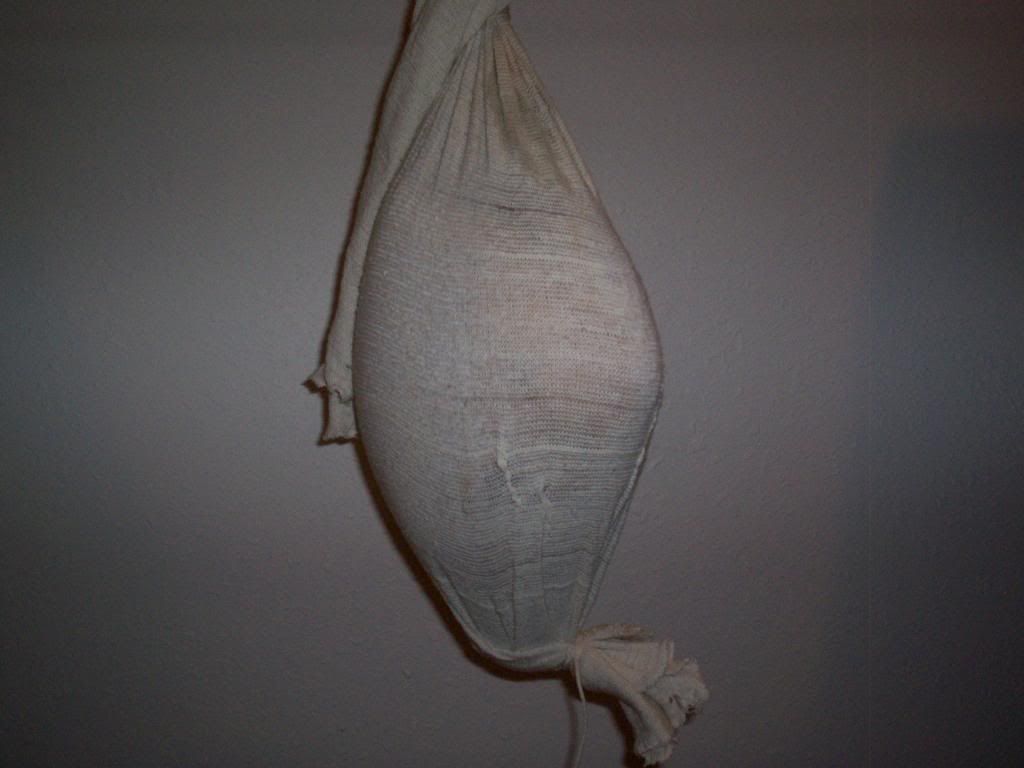
2/15/2013 Started curing two more hams.
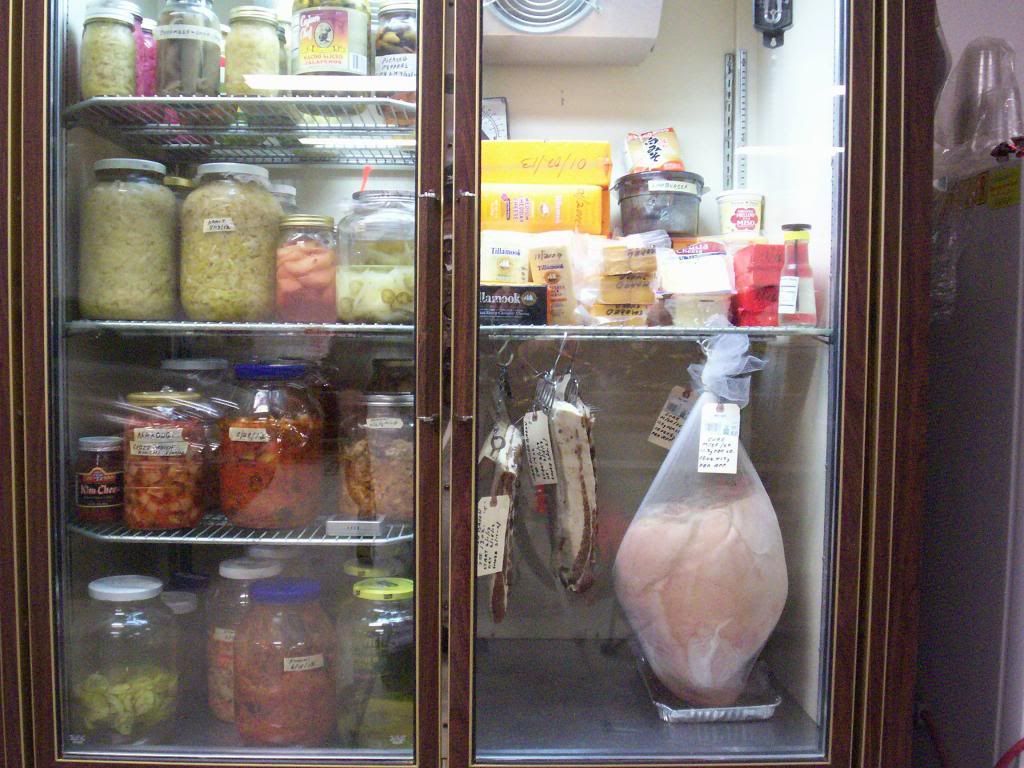
At the end of the equalization period. The ham was given a scrubbing and a quick rinse to remove accumilated mold and hung in smoker along with two pork bellies.
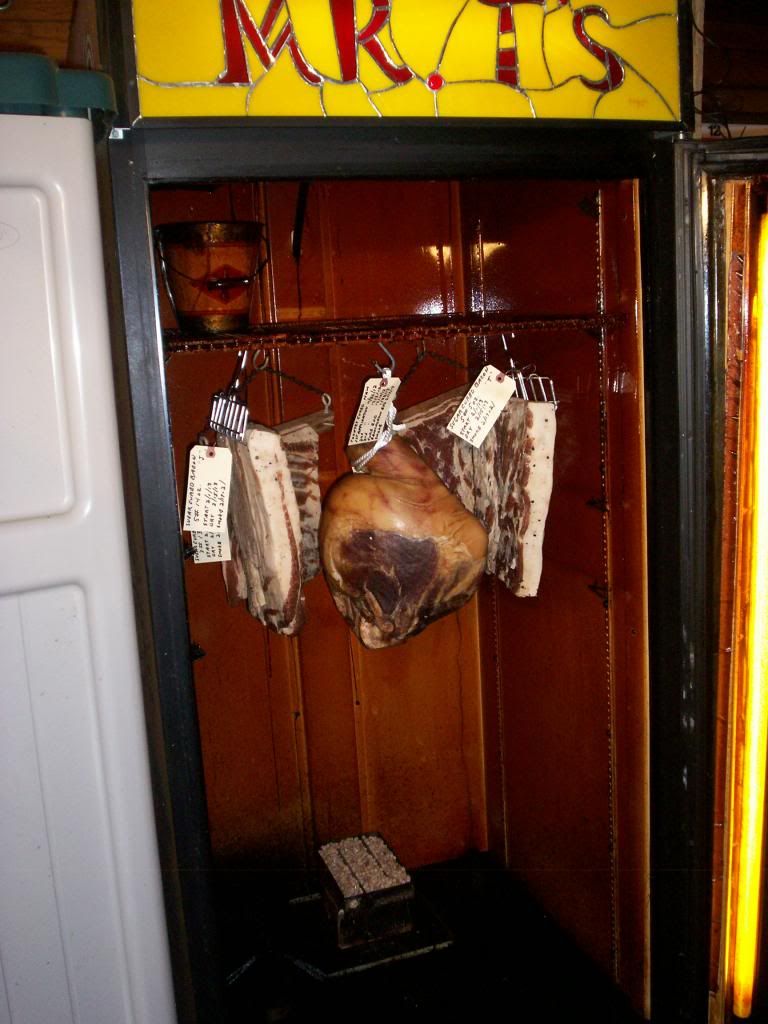
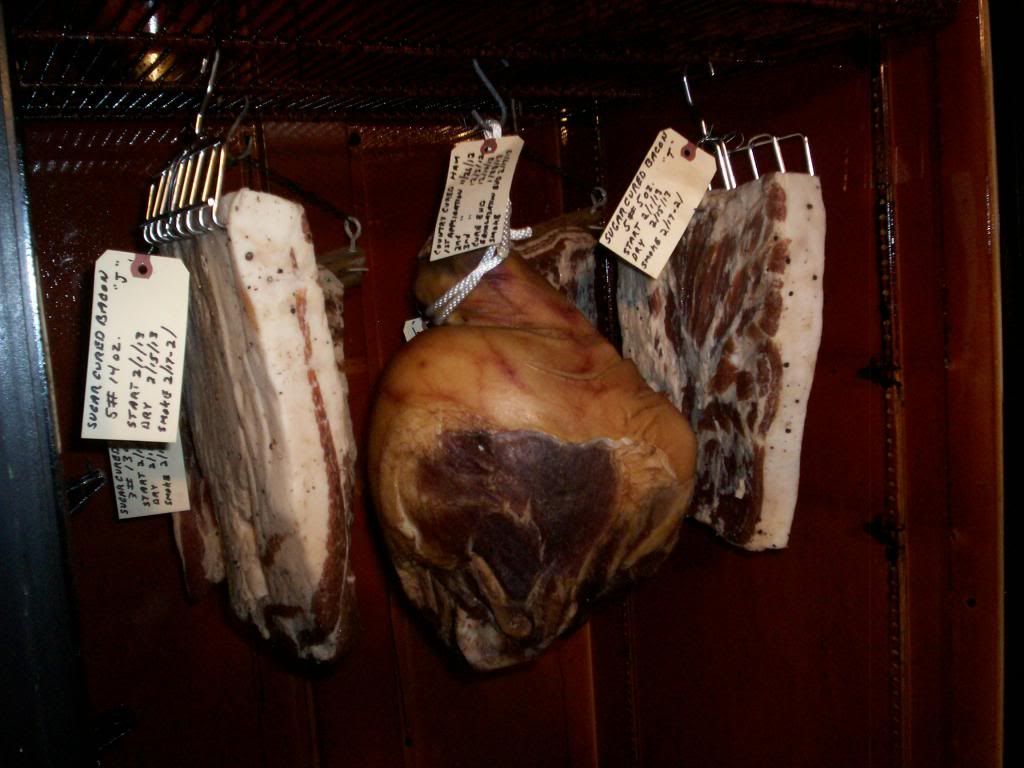
Cold Smoke
Ham and bacon after 72 hours in smoke
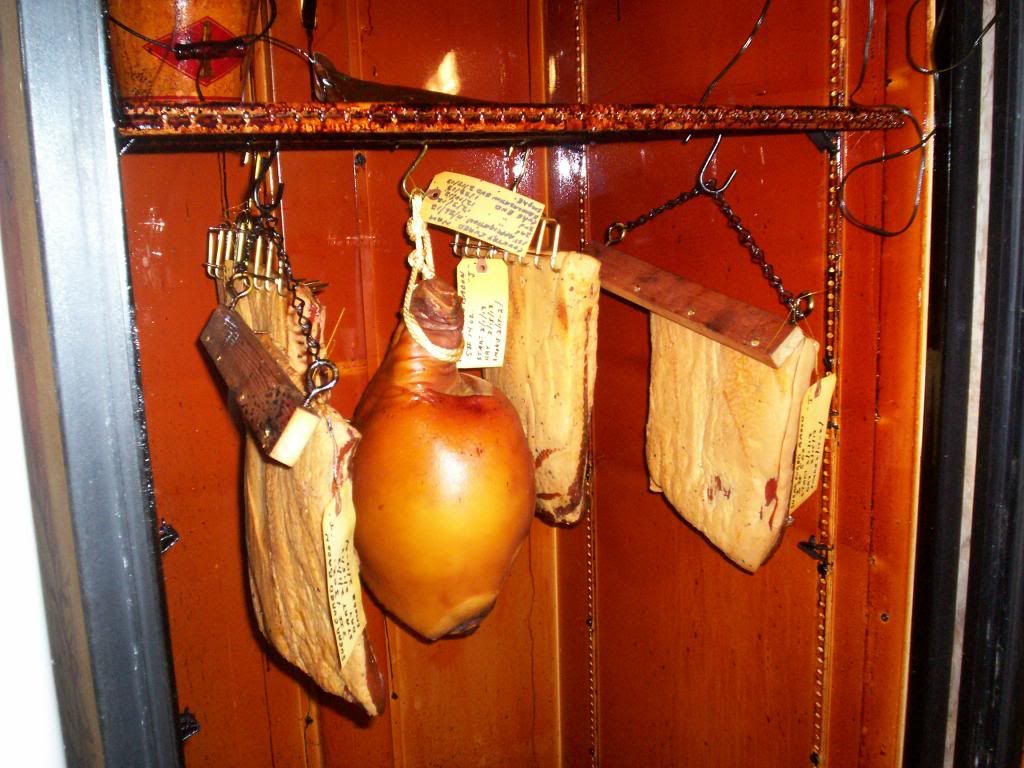
Ham after 128 hours in smoke.
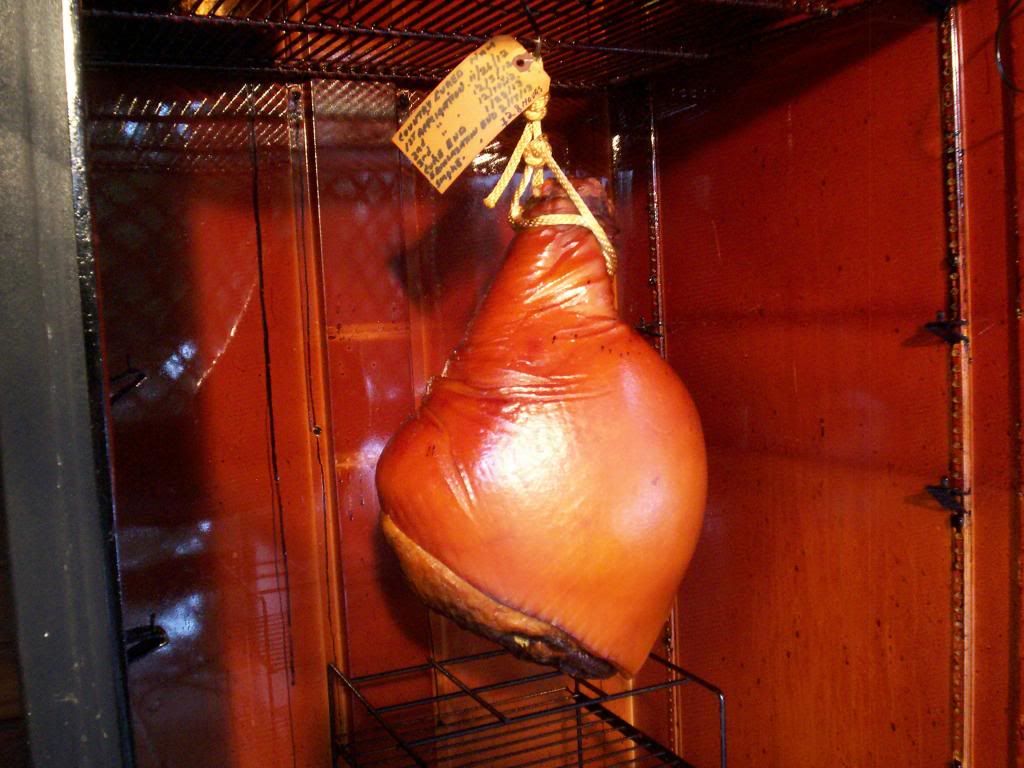
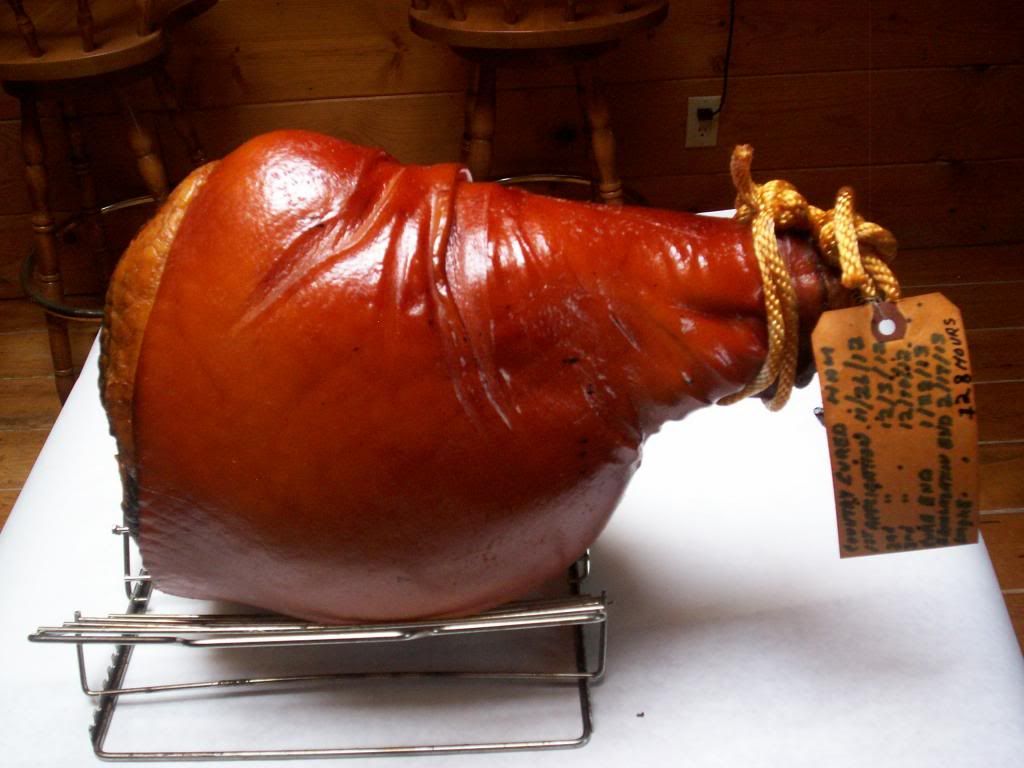
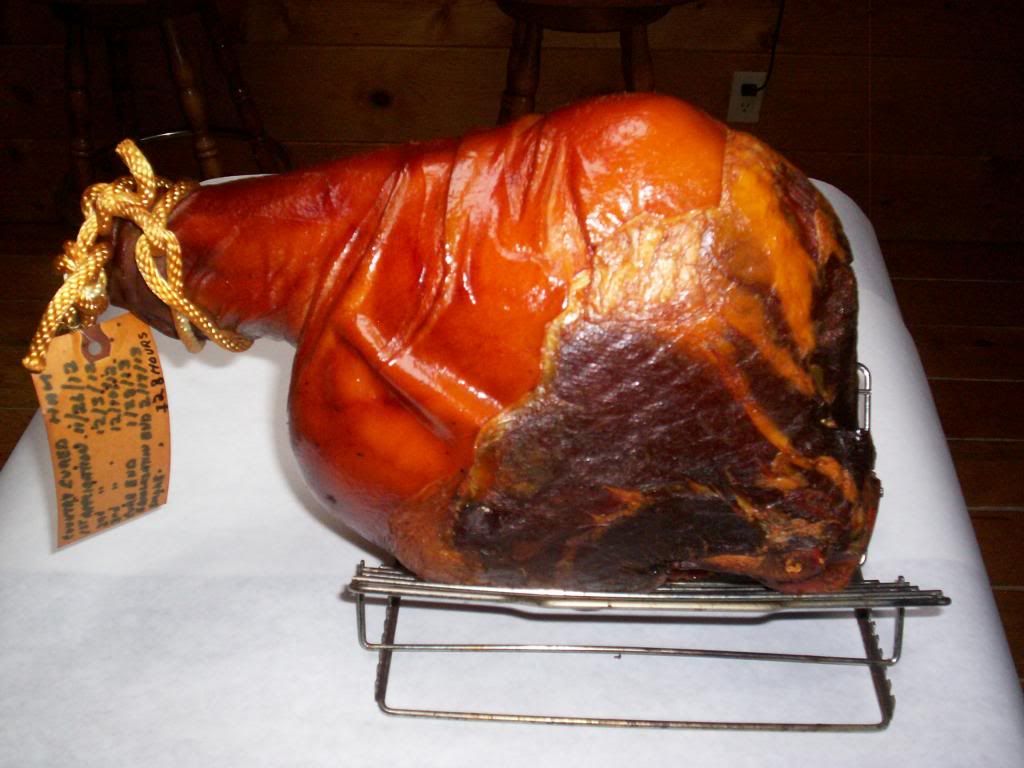
Used the AMNPS to generate smoke. Hickory pellets, 14 loads, 16 ounces per load. In smoke a total of 128 hours. High internal smoker temperature, 78⁰. Ham was tacky after long smoke.
Weight loss during cold smoke was 9 5/8 ounces or 2%. Total weight loss to date is 4# or 19%.
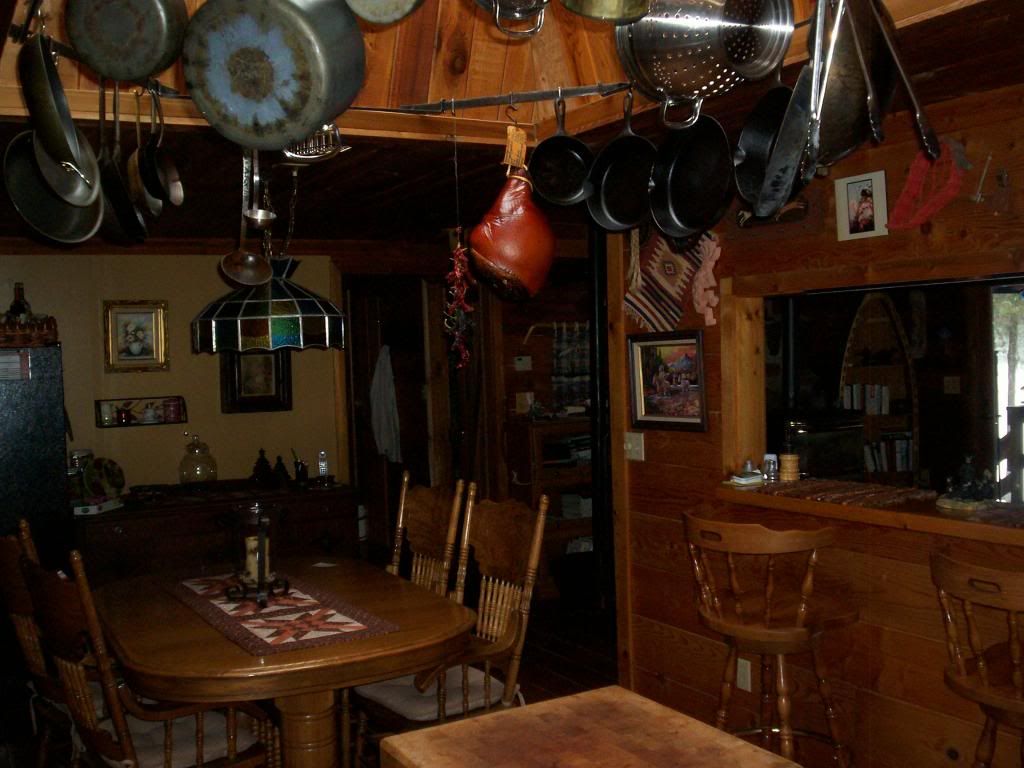
Ham being air dried for 7 days.
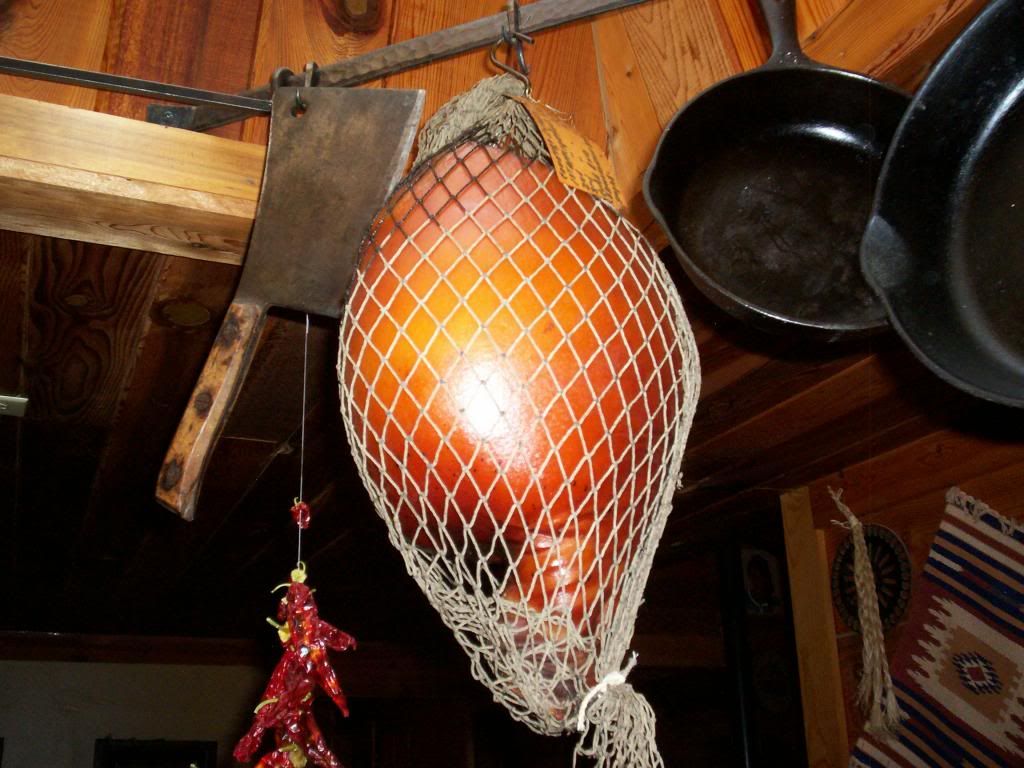
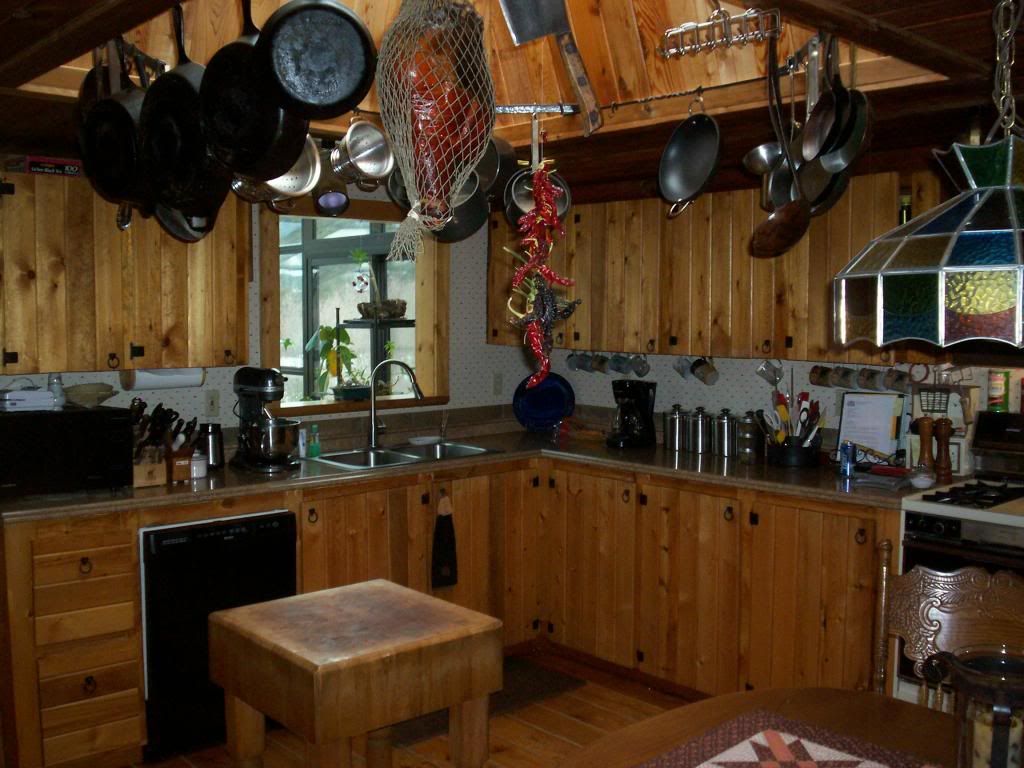
Aging:
The aging process begins after the curing and equalization processes. After four months of aging, this ham will officially become a "Country Ham". While aging develops and concentrates a ham’s rich flavor, it also reduces the ham’s moisture and accentuates its saltiness. Fat inside the ham helps counteract these effects, and is therefore a key part of aging. A ham with generous amounts of fat can be aged longer for more intense flavor, without drying out.
Slowly, enzymes naturally in the meat will break proteins down into amino acids, which give us the satisfying, taste of umami.
Hanging hock up, causes the ham to assume a narrow bullet shape. This helps hams dry out evenly, which the Europeans like. Most Americans hang their hams hock down, because it pulls the ham into a squatter “ham” shape and leads to moister ham, which suits the American palate.
The ham has now met all requirements to be called a "Country Ham".
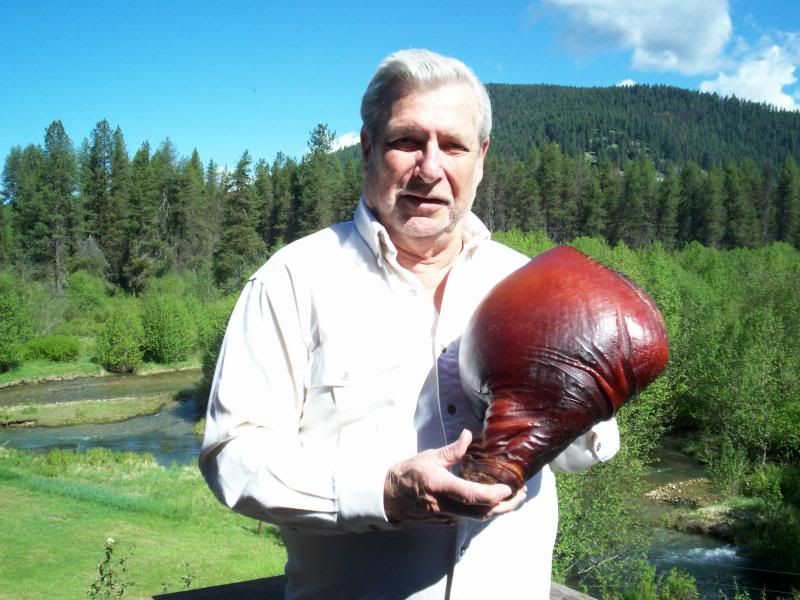
1st. It must be dry cured. Not injected with curing solutions nor placed in a curing solution.
2nd. The combined curing and equalization period must not be less than 45 days.
3rd. It must age a minimum of four months after curing.
4th. It must lose a minimum of 18% weight from fresh.
Updates to Thread:
12/01/2012 Equalization period: From 12 to 20 days.
12/04/2012 Curing: Additional information.
12/10/2012 Pic prior to third and final cure application.
01/22/2013 Additional info
02/19/2013 Additional info
02/23/2013 Cold Smoke
03/07/2013 Aging and info
05/24/2013 Country Ham
Disclaimer:
Commercial products are named in this publication for informational purposes only.
Additional Information:
Varieties of Hams
http://homecooking.about.com/library/weekly/blham.htm
http://www.asianonlinerecipes...._guide/types-ham.php
Heritage Pig Breeds
http://www.bigpictureagricultu...tage-pig-breeds.html
To be continued.